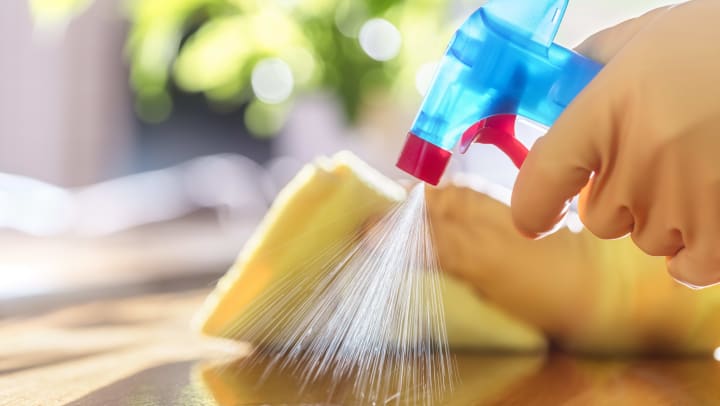As uncertainty continues regarding the coronavirus and how it spreads, most of us have become more conscious of our surroundings. While keeping your hands clean by washing them in hot, soapy water and not touching your face are good defenses against viruses, other steps are essential too.
It’s important to understand how cleaning differs from disinfecting and sanitizing. And it’s also vital to learn what surfaces should be cleaned frequently, and how to do so.
Virus Protection: Clean, Sanitize, and Disinfect
People often rely on bleach wipes and disinfectant spray to protect their homes. But keeping an environment truly safe begins with cleaning. There are three tasks associated with preventing the spread of bacteria and viruses. Here’s a quick overview of each:
- Clean: This is a necessary first step. Cleaning with soap or detergent helps remove the germs, grime, and dirt from surfaces. Once the surface is clean, you can move on to sanitize or disinfect.
- Sanitize: When you sanitize a surface, you lower the number of germs to a level deemed acceptable by public health standards. Sanitizing products target only certain types of bacteria and viruses, so it’s important to read the label.
- Disinfect: Finally, this is the step that kills both bacteria and viruses on surfaces and objects around the home. Disinfecting lowers the risk a disease will spread.
What should you be cleaning and disinfecting around your home, and how often?
While much about COVID-19 remains a mystery, experts do have some guidelines you might find helpful.
Maintaining a Clean and Disinfected Home
As you create a plan to guard against bacteria and viruses, you will want to incorporate these ideas for protecting your home, as well as items that find their way into it.
- Protecting household surfaces
When the threat of viruses is high, commonly used surfaces in your home need to be cleaned and disinfected daily. Hot, soapy water is the first step. Those surfaces and items that are touched by multiple members of the family should then be disinfected as many as three or four times a day. If a member of the household is sick, you’ll need to be even more vigilant.
A commercial disinfectant is probably the easiest and quickest product to use. If supplies are running short in your community, you can make your own. It’s as simple as combining up to one cup of bleach (no more) with one gallon of water.
Protect yourself by wearing a mask that covers your nose and mouth. Disinfecting products can be hard on your hands and skin. Make sure to wear gloves—reusable ones might be best. Wash your gloves frequently as you are cleaning and disinfecting to avoid cross-contamination.
- Making groceries, mail, and packages safe
There is unfortunately no clear and fast rule for if or how you need to care for groceries and packages that make their way into your home. Most older adults and their families should consider erring on the side of caution and disinfecting anything brought into the home, at least until more is known about how the coronavirus spreads.
- Wear a mask: A mask may help protect you from any bacteria or viruses lingering on your groceries, packages, or mail. It might also serve as a reminder not to touch your face. That will help prevent the transfer of viruses from food products and packages to your mouth or nose.
- Wash your hands: Before you begin unloading groceries or opening mail, wash your hands in hot, soapy water. Most experts say to skip the gloves and opt for a thorough handwashing before and after you touch items.
- Disinfect: You can use disinfecting wipes on cans, sealed bags, and other hard surfaces. Don’t use them on fresh foods or those that aren’t sealed as you can actually contaminate them. Wash those items in cold water, using a vegetable brush if necessary.
- Discard: Open mail and throw envelopes and packaging into the trash. You might want to do this in the garage. After disinfecting packages and groceries, throw away any wipes and bags as well.
Checklist for Home Cleaning and Disinfecting
In the course of a busy day, it’s easy to overlook some of the surfaces that are often touched. You may find it helpful to create a checklist to refer to each day. Here are a few areas of your home you’ll want to remember to clean and disinfect:
- Doorknobs and pulls
- Lamp and light switches
- Window hardware
- Kitchen faucet
- Bathroom faucet
- Shower door and faucet
- Remote controls
- Computer keyboard
- Oven dials and handles
- Refrigerator door handles
- Trash cans
- Dishwasher handle
- Keys
- Phone
- Mailbox
- Dog leash
At Clearwater Living, we understand seniors’ safety concerns, from social distancing to grocery shopping. We’ve taken unprecedented steps to protect our residents and team members. Learn more by visiting Clearwater Living’s Response to COVID-19.

